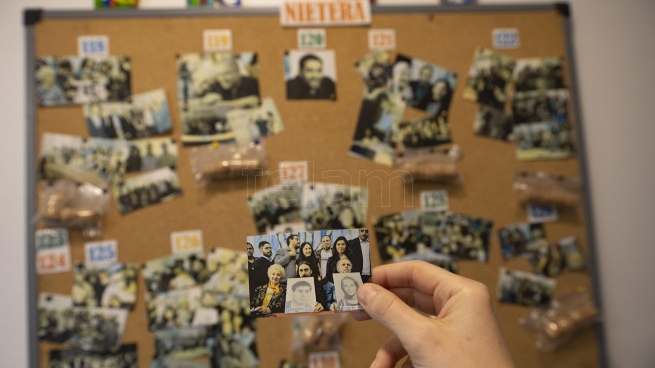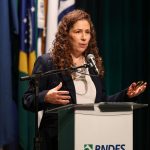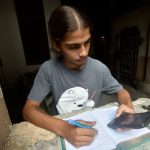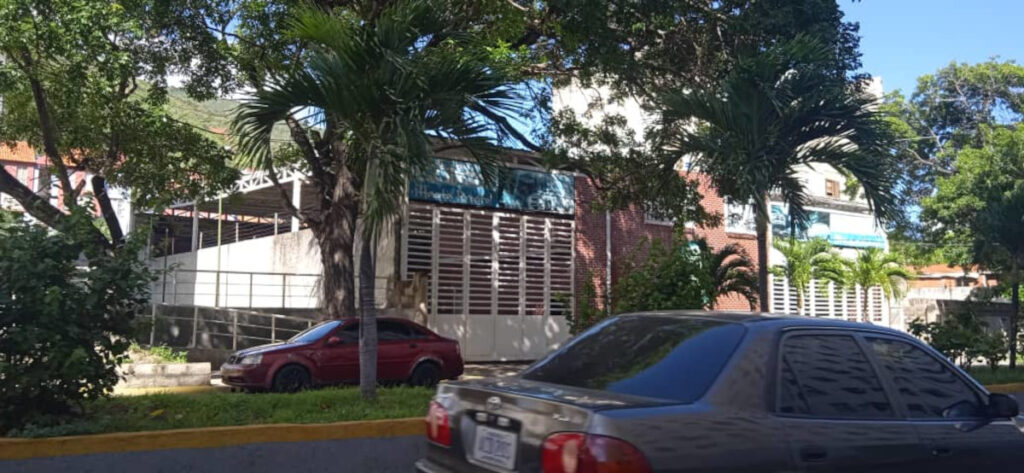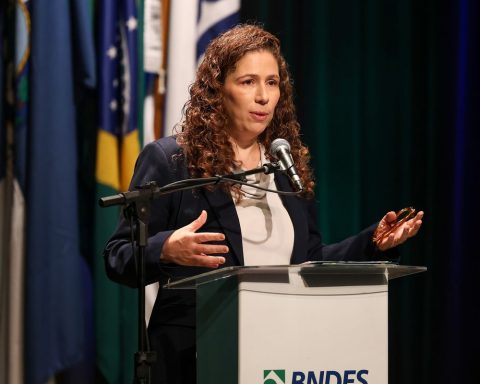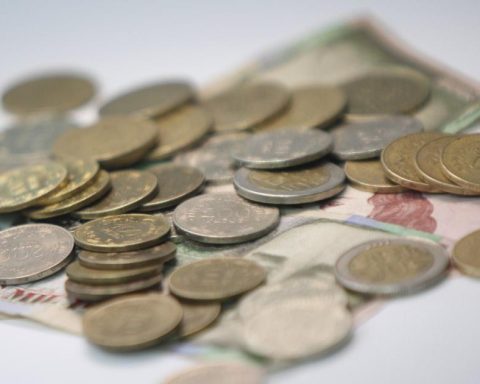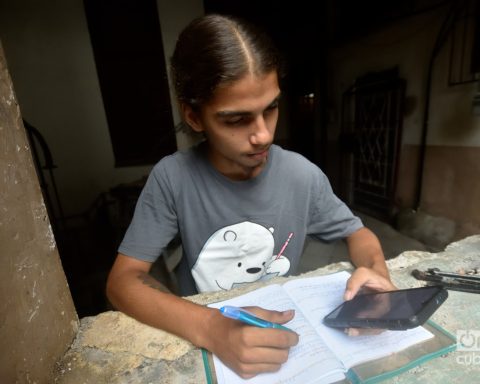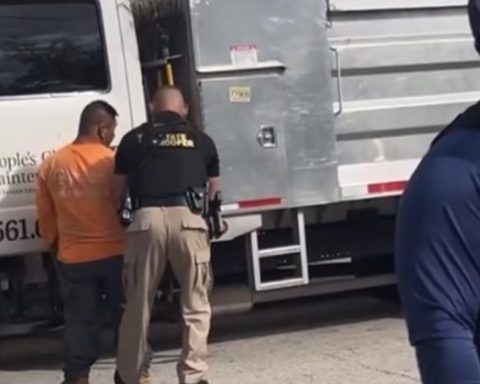The National Genetic Data Bank (BNDG), the first of its kind in the world that allowed the restitution of 75 victims of the systematic theft of babies during the last dictatorship, turns 35 with the challenge of having in two years technologies that allow the biological identity to be restored from the great-grandchildren, in case the grandchildren have deceased without knowing who they were.
“If you look at the history of humanity, the development of science in general was not focused on respecting human rights but rather on violating them, and that is why chemical weapons or eugenic projects were generated,” the director told Télam. technical general of the BNDG, Mariana Herrera Piñero.

“The Bank case was one of the first cases in which putting science at the service of repairing violations of these rights was considered,” he said.
“The Bank case was one of the first cases in which putting science at the service of reparation for violations of these rights was considered”Mariana Herrera Pinero
In fact, the BNDG was the first in the world and reference for DNA banks for criminalistics and people search that began to emerge around the world in the mid-1990s.
“In general, almost all genetic databases are devoted to solving criminalistics cases, as is the case of Codis (Combined DNA Index System) in the US or the NDNAD (National DNADatabase) in the United Kingdom,” said the person in charge from the Mitochondrial DNA area of the BNDG, Florencia Gagliardi.
“That is why all the tools that we have were developed mainly to solve police cases and what was unprecedented in the world consisted in its application for reparation by the State of the crimes that he himself committed“, said.
“What was unprecedented in the world consisted in its application for the reparation by the State of the crimes that he himself committed”Mariana Herrera Pinero
With the identification of the grandchildren who were victims of identity suppression during the dictatorship as its main mission, the creation of the BNDG on June 1, 1987 was the consequence of a movement initiated by the Grandmothers four years earlier, when they toured 12 countries to contact with the most renowned geneticists.
The motivated and joint work paid off and in 1984 they were able to bring a first tool closer, the “grandparent index”.
“At that time, molecular genetics was not fully developed and that is why we had to think about (serological) markers, which are not genes per se, but the expression or product of genes that could be analyzed in the blood, such as blood groups. , histocompatibility antigens that are used for transplants, or serum (blood) proteins that are highly variable in the population,” explained Herrera.
In this sense, Gagliardi explained that “the grandparentage index is a statistical calculation that uses the frequencies of these serological markers, because knowing this data one can calculate if the child shared these antigens by chance or because they were biologically related to those relatives, with a certainty of 99.9%”.

One year before the creation of the Bank, Paula Logares -who was then eight years old- became the first restored granddaughter whose affiliation was proven through genetic studiesat that time, by the “grandparent index”.
“It is great to have science as an ally, as support (for restitutions), because of the value that science has in our society and its tools, which exceeds the political,” Logares told Télam.
These studies were carried out by court order in the Immunology Unit of the Durand Hospital, which had a laboratory in accordance with this challenge.
“From that first case, every time Grandmothers found a possible grandchild, they made the complaint and the court ordered that the sample be taken, but the comparison was made one by one with the possible family group,” explained Gagliardi.
The specialist explained that this mechanism “was not viable because the grandparents were growing up, they could die” before being able to compare their blood with that of their grandson or granddaughter, on the one hand, and, on the other, “it was cumbersome and took a long time” being able to compare any young person with the changed identity with the entire universe of families who were looking for stolen babies.

“There you saw the the need for a genetic data bank that would store both the remaining biological sample and the genetic information obtained of each one of the possible grandchildren and of all the members of each one of the family groups that they were looking for”, with the possibility of being able to intersect any new incorporation with this universe, said Gagliardi.
The Bank was created by law 23,511 of 1987 and in 2009 a new rule was sanctioned that ordered the passage of the BNDG to the orbit of the Ministry of Science, as an autonomous and autarchic body.
Finally, the Bank was created by Law 23,511 of 1987 and in 2009 a new rule was sanctioned that ordered the passage of the BNDG to the orbit of the Ministry of Science, as an autonomous and autarchic body.
Five years after the creation of the BNDG – and also at the request of the Grandmothers – the National Commission for the Right to Identity (Conadi) was created, whose mission is to search for minors kidnapped or born in captivity during the last dictatorship and is a of the two institutions – the other is the Justice – that can request a DNA analysis from the bank.
Currently, the BNDG includes the genetic profiles of some 300 family groups and an average of 100 people per month come to have a DNA analysis against its database.
But those extractions of blood or other personal items for DNA samples are not only done in the bank facilities or in a court or in the context of a raid.
“Between 2001 and 2019 I did field work, which consisted of going through the interior and neighboring countries together with Conadi to take samples from families and young people. It was all by heart, a lot of going from house to house because sometimes it was difficult to find the directions and every time you passed an airport with the tubes of blood, it was pure adrenaline “due to the sanitary objections that the airport agents could raise,” the extraction technician Daniel Alcázer explained to Télam.

Currently, “all the samples that enter a complete genetic profile are made” according to the most advanced techniques to determine filiation in the absence of parents or with incomplete family groups, with a certainty percentage of 99.99999%.
“It consists of studies of ‘autosomal genetic markers’ -those that are inherited 50% and 50% from the maternal and paternal lines- and apart from that, lineage markers: they all undergo a study of the ‘mitochondrial DNA’ sequence that mother passes on to all her offspring but that only her female daughters will continue transmitting; and all males are tested for the ‘Y chromosome’ that is only transmitted from father to son,” he said.

“Now we are wondering if we can develop tools that allow us to identify great-grandchildren,” added Herrera.
The specialist explained that “we are not far” from achieving it, “it is a matter of a couple of years” because “the technologies are in the validation stage, it is a matter of testing them and based on these results, later incorporating them into the bank’s routine” .
With this complementary methodology called “forensic genetic genealogy” it will be possible to establish “further ties such as half-siblings or cousins in the first and second degree” or great-grandchildren.
“The history of the evolution of forensic genetics in the world is preserved in the bank’s archives,” said Gagliardi.
One of the things that both workers and directors of the Bank enjoy the most is the visit of the grandchildren, which puts a face, a story and a happy ending to each of the coincidences detected in the laboratory.
“It’s very nice for the bank staff, because it encourages us and reinforces our role because most refunds have a happy ending. In addition, it’s also good for the grandchildren to come to see how we work and have full confidence, that when we give an answer, we have no doubt that it is the true result,” said Herrera.
